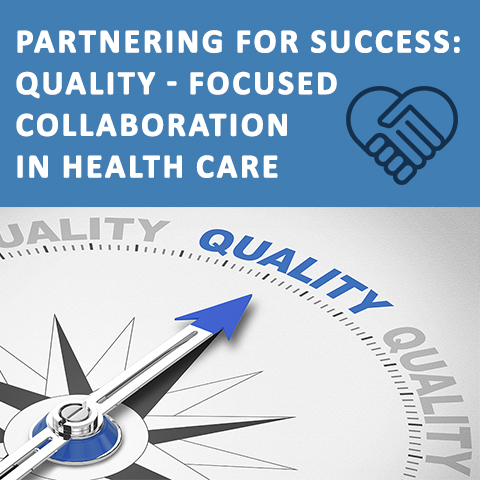Optimizing Utilization Management: Aligning Industry Regulations, Capturing Earned Revenue and Streamlining Workflows
By Dr. Timothy Brundage, CCDS
CEO and Physician Advisor, Brundage Group
 It was once believed that healthcare was recession proof. Most healthcare executives know all too well that is no longer the truth. Healthcare is still trying to rebound from the COVID pandemic, but higher labor and supply costs are likely to continue to outpace reimbursement rates. As it becomes increasingly difficult for hospitals to grow their way out of declining operating margins, many executives are seeking ways to capture earned revenue. Engaging with experienced Physician Advisors who understand the nuances of the hospital clinical revenue cycle can improve the efficiency and accuracy of patient status determinations, ultimately strengthening financial performance and supporting optimal utilization review (UR) processes.
It was once believed that healthcare was recession proof. Most healthcare executives know all too well that is no longer the truth. Healthcare is still trying to rebound from the COVID pandemic, but higher labor and supply costs are likely to continue to outpace reimbursement rates. As it becomes increasingly difficult for hospitals to grow their way out of declining operating margins, many executives are seeking ways to capture earned revenue. Engaging with experienced Physician Advisors who understand the nuances of the hospital clinical revenue cycle can improve the efficiency and accuracy of patient status determinations, ultimately strengthening financial performance and supporting optimal utilization review (UR) processes.
Observation: A Blind Spot for Utilization Review (UR) Efforts
The management of observation patients is often overlooked by utilization management workflows, leading to revenue leakage. Unfortunately, many UR departments use a one-size-fits-all screening process that ignores the Medicare Two-Midnight Rule by relying upon commercial screening criteria when validating patient status for Medicare beneficiaries rather than how long the patient will or has received hospital services and physician judgement. Partnering with experienced Physician Advisors helps ensure alignment with regulatory guidelines and enables hospitals to capture the revenue they have rightfully earned.
The codification of the Two-Midnight Rule in 2024 as the basis of inpatient medical necessity determinations for Managed Medicare beneficiaries is a gamechanger as more and more Medicare beneficiaries enroll in Medicare Advantage (MA). Data indicates MA enrollment has increased by at least seven percent in each of the last six years and surpassed those with traditional Medicare beginning in 2023 (MedPAC, 2024).
Observation and Medicare Advantage
MA plans have been slow to adopt the Two-Midnight Rule. The November 2024 Revenue Cycle KPI Benchmarking Quarterly Report from Kodiak found a significant difference in observation rates between traditional Medicare and those with MA plans even though the same medical necessity criteria apply to both populations. As the MA population grows, hospitals cannot afford to be paid observation services rates for Medicare patients who likely meet criteria for inpatient hospitalization. Depending on the hospital’s base rate, the difference between reimbursement for observations services and an inpatient admission can be several thousand dollars per patient.
Streamlining Workflows
When payors use time-based medical necessity criteria, it allows some functions previously performed by hospital UR staff to be automated. This is particularly important when managing Medicare observation patients because the time they are receiving hospital services is tracked in hours. Hospitals should be actively monitoring how long Medicare patients receive observation care.
- Medicare requires a minimum of eight hours to bill Medicare Part B for observation.
- Observation stays longer than 24 hours result in revenue leakage based upon how it is reimbursed by Medicare.
- Traditional Medicare patients who are expected to need hospital care beyond two midnights should be converted to inpatient status as soon as the expectation is met.
Why Actional Metrics for Utilization Review Matters
Perhaps one reason so many MA patients are billed as observation is a climate of denial avoidance. Unfortunately, too many hospital executives implement goals to reduce the volume of denials rather than tracking how hospital UR functions contribute to denial volumes. Many hospitals have become overly conservative with their patient status determinations to avoid denials, which are increasing despite these efforts. Hospital leadership needs to be monitoring the final denial rate rather than the initial denial rate. The February 2025 Revenue Cycle KPI benchmarking quarterly report from Kodiak found an initial denial rate of 11.8% with a 2.8% final denial rate in 2024 suggesting that appealing denials works.
While there is a cost associated with appealing inpatient authorization denials, leveraging Physician Advisors during the peer-to-peer process generates savings that offset the investment. Incorporating the Physician Advisor into the Medicare self-denial review process supports revenue capture for the care already delivered - using physician judgement that commercial screening tools simply cannot replicate.
Conclusion
Failure to address gaps or inefficiencies in hospital UR processes results in revenue leakage. While validating inpatient admission orders is critical, it often takes precedence over monitoring patients placed in observation. To capture earned revenue for the care already delivered, hospitals must proactively track observation rates across both traditional Medicare and MA, as well as length of time receiving observation services.
 Learn more about “Utilization Management, Industry Regulations, Revenue Leakage and Workflow Inefficiency” during Dr. Timothy Brundage’s session at the ABQAURP Annual Conference on Friday, September 12, 2025.
Learn more about “Utilization Management, Industry Regulations, Revenue Leakage and Workflow Inefficiency” during Dr. Timothy Brundage’s session at the ABQAURP Annual Conference on Friday, September 12, 2025.
For more information and to register, visit: www.abqaurp.org/AnnualConference.
REFERENCES
Kodiak. (Feb. 2025). “February 2025 Revenue Cycle KPI Benchmarking Quarterly Report.”https://www.kodiaksolutions.io/internal/benchmarking_reports/kpi_
benchmarking_february_quarterly
Kodiak. (Nov. 2024). “November 2024 Revenue Cycle KPI Benchmarking Quarterly Report.” https://www.kodiaksolutions.io/internal/benchmarking_reports/kpi_
benchmarking_november_quarterly
The Medicare Payment Advisory Commission. (July 2024). “A Data Book: Health Care Spending and the Medicare Program." https://www.medpac.gov/wp-content/uploads/
2024/07/July2024_MedPAC_DataBook_SEC.pdf